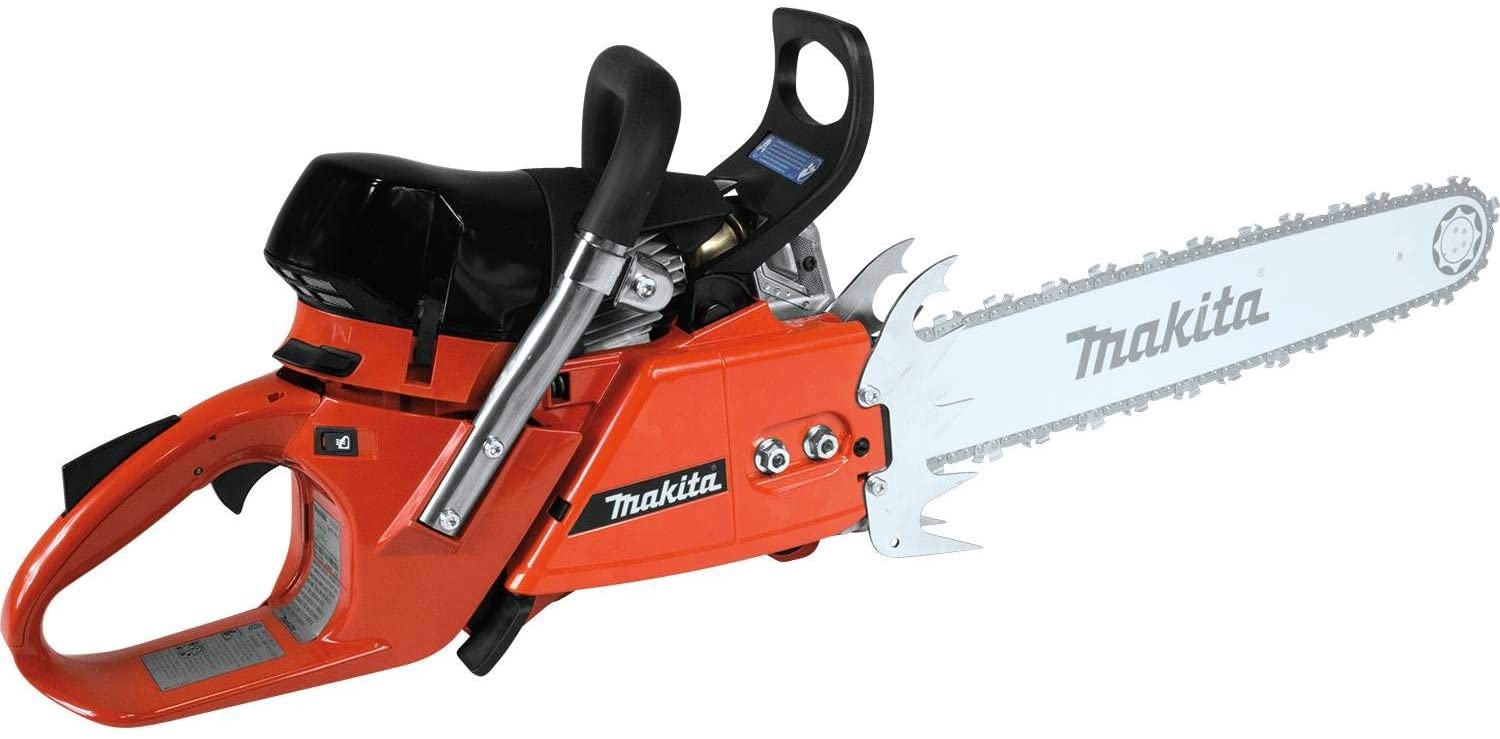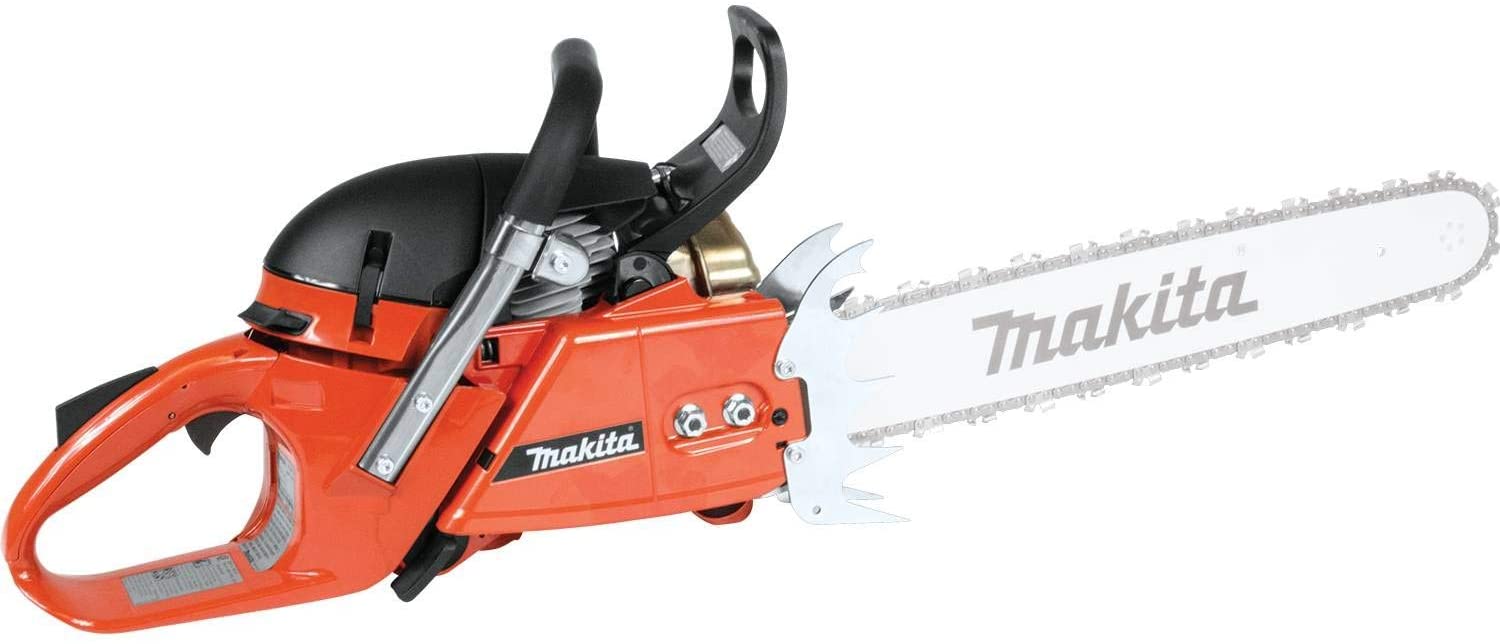Best 80cc Chainsaw
By:
Tools Guidance
Published:
November 8, 2025
Do you want to buy the best 80cc chainsaw? You’ll also need an 80cc high-power chainsaw for the job. Then you’ve come to the right place.
We’ll show you how to choose the best chainsaw for your needs in this article. Because those two factors go hand in hand, this advice also applies to anyone looking for the greatest high power chainsaw. You’ll also find solutions to frequent chainsaw questions along the road, ensuring that you know everything there is to know about chainsaws. So, let’s get started.
Table of Contents
2 Best 80cc Chainsaw
1. Makita EA7901PRZ1 79 cc Chain Saw

The air filter cleaning system is an important and highly praised component of the engine. As a bonus, the air filter can be used seldom. Because the model has an excellent air filter, there is no junk collection inside the mechanical component of the model.
Moving forward, the 79cc engine has a maximum output of 5.7hp and can handle large loads. This 2-stroke engine offers one of the industry’s greatest power-to-weight ratios.
The engine has a rotational speed of about 12,800 RPM. This is particularly significant because, with a power of more than 10000 RPM, you can deal with any type of wood.
Despite its many advantages, this saw has several disadvantages. As most people have mentioned, tension is quickly broken. Because this tool weighs 18.7 pounds, it may be too heavy for some users.
Specifications
- Item Dimensions: 11 x 21.9 x 13.2 inches
- Brand: Makita
- Power Source: Gas Powered
- Horsepower: 5.7 hp
- Item Weight: 18.7 Pounds
Key Features
- In chilly weather, the heated handle improves operator comfort.
- Heavy-duty air filter system for increased durability and air filter life.
- Automatic half throttle lock that is simple to initiate.
- The chain compartment is simple to clean and effectively removes chips.
- The slide out baffle can be set for effective operation in cold conditions.
Pros
- Easy to start
- Easy to clean
- Filtration system for heavy-duty air
- 12,800 RPM is the engine speed
Cons
- Very loud
2. Makita EA7900PRZ 79 cc Chain Saw

Makita is another well-known power tool manufacturer with a wide range of products. Makita also has an excellent chainsaw choice, as discussed previously.
The Makita EA7900PRZ chainsaw is ranked second in this article since it comes with a variety of accessories. A chainsaw, battery pack, and cover, as well as a charging kit, are included. Because it covers all of these goods, it is a fantastic deal.
With the empty fuel tank and empty oil tank, the weight is 18.3 pounds. The weight won’t vary much once the oils are filled in. The air intake filter cleaning system is another impressive feature of the engine.
This engine has a rotational speed of roughly 12,800 RPM. This is especially significant because, with a power of more than 10000 RPM, you can deal with any type of wood.
This chainsaw boasts an electronic ignition and an easy-starting automated half-throttle lock. It has an automated half-throttle lock for quick starting and a fully electronic ignition with optimal timing across all rpm levels.
Specifications
- Item Dimensions: 11 x 22 x 13.2 inches
- Brand: Makita
- Power Source: Gas Powered
- Horsepower: 5.7 hp
- Item Weight: 18.3 Pounds
Key Features
- Automatic half throttle lock that is simple to initiate.
- For greater productivity, use a large metal spike bar.
- Durable inertia/mechanical chain brake with two points.
- The chain compartment is simple to clean and effectively removes chips.
- The slide out baffle can be set for effective operation in cold conditions.
Pros
- Durable
- Easy to start
- Easy to clean
- Engine speed of 12,800 RPM
Cons
- Both the bar and the chain are available individually.
Consider these factors before purchasing the best 80cc chainsaw
If you’re new to buying a chainsaw, narrowing down your selections can be tricky. There are numerous aspects to consider when purchasing a chainsaw. Some of them are listed below to assist you determine which chainsaw is ideal for you.
Blade Length
The guide bar is sometimes referred to as the blade length. This defines where the chain will be joined, and it will rotate to cut the wood. When selecting a gas-powered chainsaw, this is a crucial issue to consider.
You must measure the length of the blade or chain of a chainsaw in order to establish the maximum length of the blade or chain. Guide bars come in a variety of lengths, but for gas chainsaws, the range is 12 to 72 inches.
A chainsaw with a blade length of 12 to 20 inches is ideal for homeowners and casual lumberjacks. 20 inches and higher is suggested for professional use.
To figure out which one is best for you, follow the general thumb rule that the chainsaw blade must be at least 2 inches larger than the wood you intend to chop. It offers adequate clearance and protects the user from any injuries caused by kickback, which happens when the saw blade suddenly thrusts back towards the user.
Power
It denotes the size of the engine. The simple rule is that the greater the number, the more powerful the engine. Efficient engines are capable of tackling challenging operations such as huge tree felling. Keep in mind that machines with more power are going to be heavier.
If you need to move around a lot or undertake light to moderate duties, little engines are preferable. The CC rating or capacity of an engine can easily be used to determine the power of a chainsaw. There are two types of gas chainsaw engines: 40 CC and 60 CC. A 60-CC engine is more efficient than a 40-CC engine, as you might assume.
A chainsaw with a power range of 24cc to 64cc is suitable for household and occasional use. If you require a chainsaw for heavy-duty cutting, you should hire a professional instead of doing it yourself.
The Speed of the Blade
Many power tools come with information on the blade or head speed. This is significant because greater motor speeds or quicker tool heads usually imply better performance. Chainsaw blade speed can alternatively be expressed as RPM or FPS. FPS stands for feet per minute and refers to the speed at which the chain of a chainsaw moves. RPM stands for rounds per minute and refers to the engine or the motor, whereas FPS stands for feet per minute and refers to the speed at which the chain of a chainsaw moves.
Gas chainsaws with 4000 RPM, 5000 RPM, and 30 FPS or 40 FPS are available. Chainsaws with a speed of 40 FPS or 5000 RPM will, as you may assume, perform better. This enables for speedier cutting and helps you to cut more quickly.
Buckling Spikes
People who need to conduct a lot of tree cutting and trimming prefer gas chainsaws. If you prefer the same choice, we propose that you check into Buckling Spikes. These are sharp metal spikes that link the blade base to the chainsaw’s body.
You’ll need to insert them into the tree trunk to sustain the machine while it’s chopping. With the bucking spike feature, you can cut or chop trees faster. Straight cuts can be made with it, and it protects against kickback.
Handles
Chainsaws typically come with two types of handles: top and rear. Chainsaws with a rear handle can be utilized for ground work. The top handle models are made for jobs that require climbing up trees or cutting or pruning from a high vantage point.
Anti-Vibration
This feature reduces the vibrations that occur when using a chainsaw. This feature will enable the user to work for longer periods of time. It reduces numbness and discomfort.
Start-Up Assist in the Spring
It’s inconvenient to have a gas chainsaw that takes several pulls to start. To circumvent these issues, spring assist beginning is a superior solution. This feature lowers the amount of force needed to start the machine. This makes things a lot easier.
Weight
The weight of a chainsaw is an important factor to consider when purchasing one. Before you start weighing your options, figure out how long you’ll be using the chainsaw and how heavy it will be. Although 12 pounds may appear to be little at first, it can quickly add up. It’s crucial to look at the product’s weight and make sure it’s distributed evenly.
Warranty and Durability
If you cut a lot of wood with your gas chainsaw, you can have issues. Gas chainsaws should last a long time. The best method to ensure that your chainsaw lasts a long time is to get a good warranty. A two-year warranty is standard on most gas chainsaws. Some versions, however, come with a four-year warranty.
It is possible to inspect the quality of a gas chainsaw’s construction. Longer-lasting gas chainsaws have a higher build quality and a longer warranty. It’s crucial to check the chainsaw’s chain material. Carbide chains on gas chainsaws can endure a long time before needing to be replaced.
Final Words
That’s all there is to it, pros. If you’re looking for the greatest professional chainsaw, you now know what to look for. Always choose a model that fulfills your project requirements and will allow you to work comfortably.
Frequently Asked Questions
1. What is a good CC for a chainsaw?
The size of an engine is expressed in cubic centimeters (cc) or cubic inches (cubic inches). The higher the number, the more powerful the engine is in general. A saw in the 32 cc to 45 cc range will suffice for the majority of homeowners.
2. What size chainsaw do I need to cut large trees?
The general rule is to choose a chainsaw with a bar two inches longer than the diameter of the material you’ll be cutting. For instance, if you need to cut a tree 10″ across, you’ll need a 12″ chainsaw.
3. How powerful of a chainsaw do I need?
For residential use, a 50cc engine would generally be enough. For regular, demanding activities in vast premises, such as woodland or huge estates, a large, powerful professional chainsaw like this would be required. These would be ideal for felling trees, chopping big logs, and doing a lot of heavy lifting.
4. Can you change the bar length on a chainsaw?
Yes, but you’ll need a bar made specifically for your saw. Different saws require different designs, and the bar must also match the chain/sprocket setup. If you wish to do that, your best chance is to take it to a dealer to make sure everything is in order.
5. What’s the best tool to cut firewood?
When splitting logs or chopping tiny branches into firewood-length chunks, an axe is a suitable choice. While it can cut through thick logs with a few strokes, hacking through large trunks quickly becomes a chore, especially if you need to cut many lengths. When that happens, the greatest tool to have is a saw.
Latest
Get a quote
If you need assistance, send us an email. We try to answer all requests for assistance within 24 to 48 hours.
Get Quote